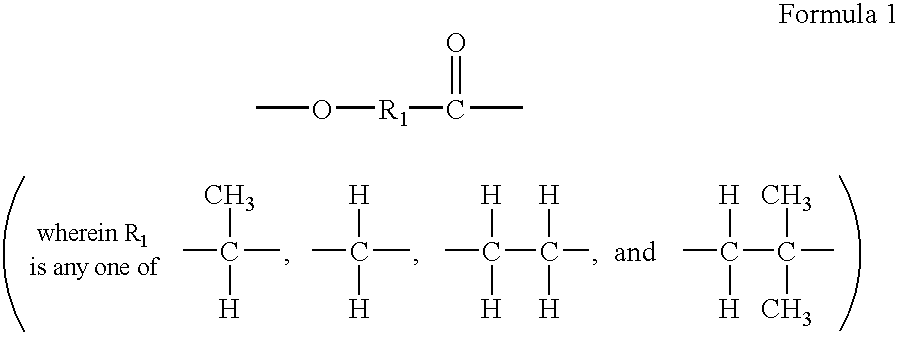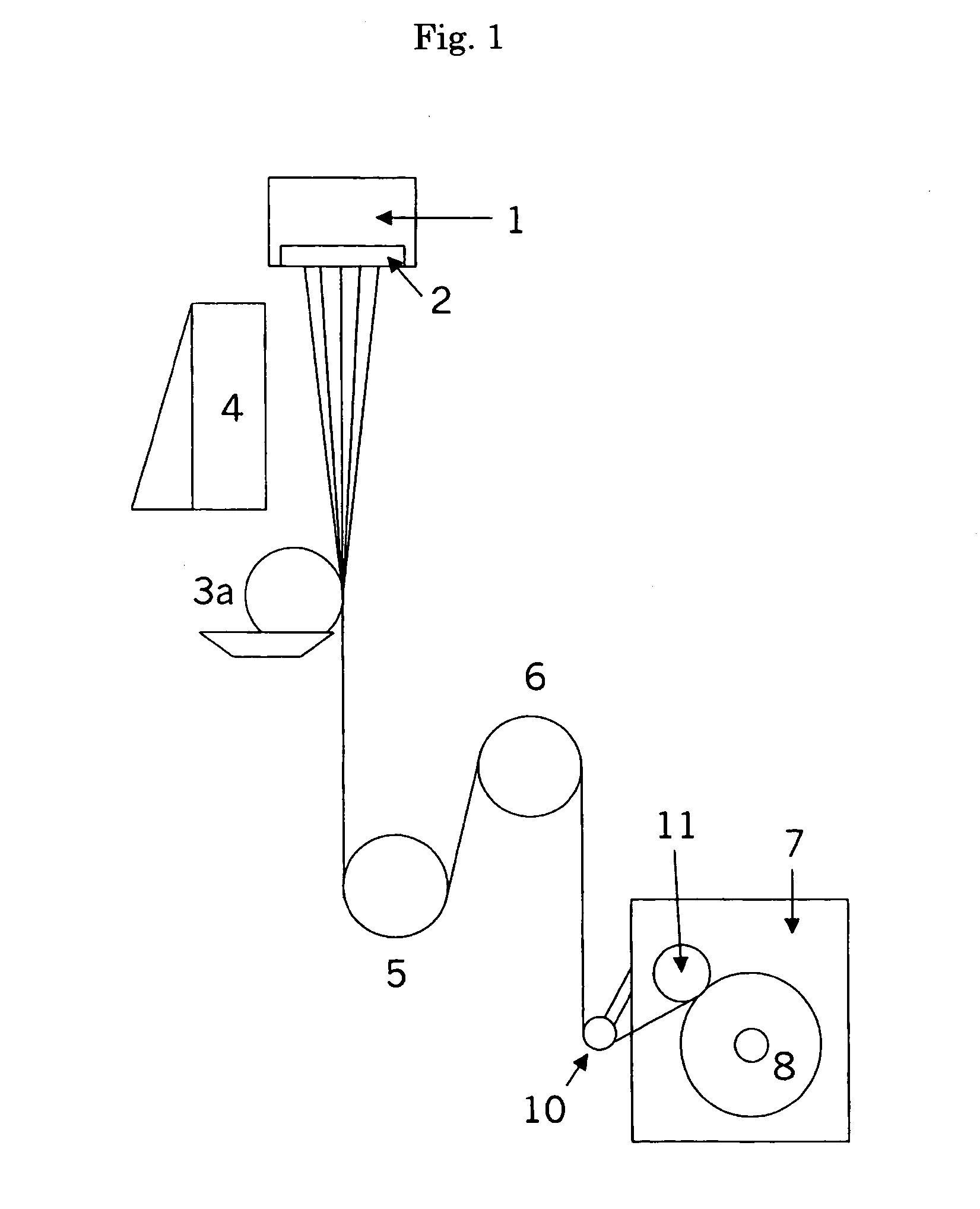Thermoplastic cellulose derivative composition and fiber comprising the same
a technology of thermoplastic cellulose and derivatives, which is applied in the direction of sugar derivates, biocides, detergent compounding agents, etc., can solve the problems of low productivity of fibers obtained by wet spinning process or dry spinning process, adversely affecting the environment, and not necessarily friendly with the environment, etc., to achieve excellent heat resistance, excellent mechanical properties, and excellent mechanical properties
- Summary
- Abstract
- Description
- Claims
- Application Information
AI Technical Summary
Benefits of technology
Problems solved by technology
Method used
Image
Examples
example 3
[0128] The same procedure as Example 1 was repeated except that the ratio of tin octanoate loaded was 0.5%. by weight relative to 100 parts by weight of cellulose diacetate to form a polymer. This polymer was referred to as "P2".
[0129] The rate of an increase in weight (graft rate) of polymer P2 relative to the weight of the loaded cellulose diacetate was 310%. As a result of measurement of a rate of heating loss of polymer P2, the rate of heating loss was 3.2%, and thus polymer P2 had sufficiently excellent heat resistance. The melt viscosity was 75 Pa.multidot.sec, and thus polymer P1 exhibited good fluidity. The melt tension was 5 mN.
[0130] Then, melt spinning was performed at a spinning rate of 500 m / min by the same method as Example 1 except that polymer P2 was used, a nozzle having 4 holes was used, and a discharge rate was 4.4 g / min. As a result, smoking of the spun yarn was not observed, and a discharge condition was also stable. Also, the yarn making properties in melt spin...
example 4
[0133] The same procedure as Example 1 was repeated except that the ratio of tin octanoate loaded was 0.15% by weight relative to 100 parts by weight of cellulose diacetate to form a polymer. The graft rate of the thus-obtained polymer was 58%. The resultant precipitate was aggregated and dried, and then 20 parts by weight of poly L-lactic acid having a weight average molecular weight of 125,000 and separately prepared and dried, was added to 100 parts by weight of grafted cellulose acetate. The resultant mixture was kneaded by a biaxial extruder, and then pelletized. The thus-obtained polymer was referred to as "P3".
[0134] The rate of heating loss of polymer P3 was 2.2%, and thus polymer P3 had sufficiently excellent heat resistance. The melt viscosity was 150 Pa.multidot.sec, and the melt tension was 20 mN.
[0135] Then, melt spinning was performed by the same method as Example 1 except that the spinning rate was 1500 m / min, and the discharge rate was 7.9 g / min. As a result, smoking...
example 5
[0138] 100 parts by weight of cellulose acetate (substitution degree of 2.5, average degree of polymerization of 160) and 400 parts by weight of D,L-lactide (produced by Purac Co., Ltd.) were dried, and were charged in a four-neck flask with a Dimroth condenser, in which an N.sub.2 atmosphere was formed. The flask was heated to 140.degree. C. by immersing in an oil bath, and stirred for 60 minutes to dissolve a system contained in the flask. Then, 0.2 parts by weight of tin octanoate was added as a ring-opening polymerization catalyst, and the. resultant mixture. was reacted for 30 minutes. After the completion of reaction, the flask was taken out of the oil bath and cooled, and acetone was added to the flask to completely dissolve the system. In this example, it was found that no insoluble solid was observed, and the reaction product was dissolved in acetone. An acetone solution of the reaction product was re-crystallized in an excess of methanol to obtain a rice-cake-like soft pre...
PUM
| Property | Measurement | Unit |
|---|---|---|
| Temperature | aaaaa | aaaaa |
| Fraction | aaaaa | aaaaa |
| Fraction | aaaaa | aaaaa |
Abstract
Description
Claims
Application Information
 Login to View More
Login to View More - R&D
- Intellectual Property
- Life Sciences
- Materials
- Tech Scout
- Unparalleled Data Quality
- Higher Quality Content
- 60% Fewer Hallucinations
Browse by: Latest US Patents, China's latest patents, Technical Efficacy Thesaurus, Application Domain, Technology Topic, Popular Technical Reports.
© 2025 PatSnap. All rights reserved.Legal|Privacy policy|Modern Slavery Act Transparency Statement|Sitemap|About US| Contact US: help@patsnap.com


